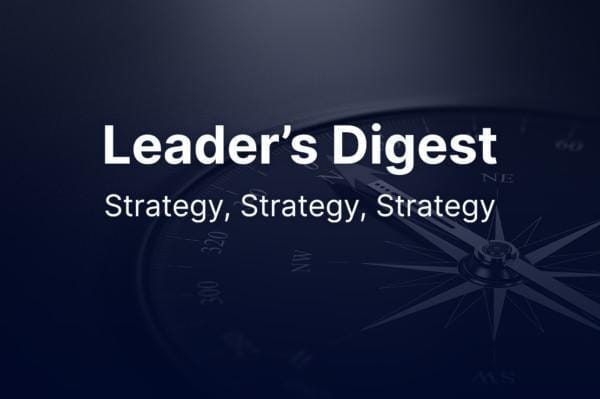9May2022
“A plan of action designed to achieve a long-term or overall aim.” That’s how the Oxford English Dictionary defines strategy. But there’s a lot more to it.
Over the past few years, strategy has not necessarily been the hottest topic in business as it seems that the likes of leadership and innovation have taken a bigger chunk in the space. However, strategy still is immensely important to businesses and leaders.The nature of strategic work might have changed but it’s still important for any business to work on and around its plan of action.
To help you advance and expand your business strategy, we picked up 5 (+1) effective thoughts about strategy from our past speakers.
1. Find Your Strategy
First of all, Keith Cunningham highlights that strategy is one of the four things that a CEO cannot delegate. He refers to strategy as “the machine” that consists of your plan to get over the obstacles that prevent you from achieving your goal(s). According to Keith, there are a few questions that can help you build and develop your business strategy:
1. Who do I want to buy from me?
2. What must happen to cause them to buy?
3. What must happen to keep them buying?
4. What could cause them NOT to buy?
2. Include Your Team in Your Strategy Development
“The CEO can see opportunities that others don’t see and…make the judgements and the tough calls others are unable to make.” These are the words of A.G. Lafley, the former CEO of Procter & Gamble. Gary Hamel, however, strongly disagrees with him: “That is self-serving bullshit. It just isn’t true.”
Gary emphasizes that even though it is the responsibility of top management to develop a strategy for an organization, they need to include the knowledge and insight of the rest of the organization in the work. He even argued that companies actually miss the future as leaders are often holding too tightly on their views of the past.
“Increasingly, CEOs and leaders need to be social architects. Strategy cannot start at the top. But you can create a climate in which new ideas emerge.”
3. Have a Diverse Team Thinking about Strategy
Carla Harris, on the other hand, highlights that strategic thinking requires above all diverse thinking. “If you have homogenous thinking at the table, you will have a gap in your go-to-market strategy. You miss the benefit of the intellect, experiences, perspectives and networks that come with having different people at the table.”
Carla recommends leaders to focus on diversity as a “dominant competitive parameter.” She argues that innovation is born from ideas—and ideas require different perspectives from a multitude of people. Since people have unique perspectives, managers should assemble a diverse group to create the innovative idea that allows a firm to obtain and retain a leadership position.
4. Confront Uncertainty
“Speculation is the easy thing to do, but strategy is the difficult thing to do,” says Amy Webb. What she suggests leaders do in terms of strategy is to quit trying to predict the future but rather create preparedness within your business. She has a 3-step formula to help you do that:
- Confront Your Cherished Beliefs. Identify your beliefs about your business, your industry, and the future. Then, confront those thoughts and question whether they are based on data, or something else.
- Identify Signals of Change. Pinpoint the signals of change outside your industry by looking at macro sources such as infrastructure, geopolitics, economy, public health, demographics, and environment. Then, connect the signals back to your organization and ask what it means for you.
- Map Next-Order Outcomes. Use a tool called the Axes of Uncertainty, which helps you to think about what are the next-order effects of the signals that you are seeing and the uncertainties that you have.
5. Use Scenarios for Strategic Planning
In the constantly changing world we live in today, working with different scenarios is increasingly important. And what is scenario planning in practice? According to Risto Siilasmaa, it simply means that you identify a few scenarios that might occur in the future, and you prepare your company for those situations instead of relying on one single plan. To get started, you can use these 6 steps:
- Identify the relevant scenarios for your organization’s future.
- Determine what data can tell you which one of those scenarios will happen.
- Try to get the data you need to predict the probability of each scenario.
- Prepare your organization for each scenario.
- Evaluate which scenarios would be preferable to you, and which not.
- Consider what action can be taken to increase the likelihood of the positive scenarios and decrease the likelihood of the negative scenarios.
+ Take Care of Your People
James Hewitt argues that human cognitive performance is increasingly becoming a differentiator in the workplace. “Complex problem solving, collaboration, and creativity are the output of a rested and focused brain. These capabilities, however, will not be expressed at their best with our current ways of living and working.”
According to James, the way most knowledge workers try to work is not productive. This in turn means that the companies that are able to enhance the well-being of their employees can improve employee productivity by up to 19%—and this is set to become a business value of strategic importance.

 by:
by: 
